It’s Time to Speak Out at DOE’s Surplus Plutonium Hearings in Carlsbad and Los Alamos
“Buckle up. This is going to be a contentious discussion.”
On Tuesday, January 24th and Thursday, January 26th, the Department of Energy will hold in-person public hearings in Carlsbad and Los Alamos, respectively, about their plans to handle, treat and dispose of surplus plutonium in New Mexico. On Monday, January 30th DOE will also hold a virtual public hearing about these plans to ship 34 metric tons of surplus plutonium in the form of plutonium pits, or the triggers, and non-pit plutonium for nuclear weapons to process at Los Alamos National Laboratory (LANL) and dispose at the Waste Isolation Pilot Plant (WIPP).
This is DOE’s sixth attempt to address how to handle surplus plutonium so that it could no longer be used in nuclear weapons. DOE’s plan is found in the draft Surplus Plutonium Disposition Program environmental impact statement (EIS), which is open for public comment until February 14th. https://www.energy.gov/nepa/doeeis-0549-surplus-plutonium-disposition-program
Previous DOE attempts did not include LANL and WIPP. That has changed. LANL and WIPP are now DOE’s targets.
Since 1994, DOE has spent billions of dollars and held dozens of public meetings and hearings about how to prevent access to surplus plutonium. Immobilization is one method. But in 2002, DOE canceled the immobilization program “due to budgetary constraints,” even though thousands of public comments supported immobilization of all the plutonium.
You can tell DOE three things at the hearings.
First, no additional plutonium should be brought to LANL.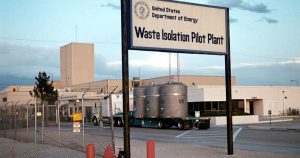
Second, WIPP has a limited mission and does not have the capacity for all the surplus plutonium.
Lastly, DOE must immobilize and safely store the plutonium until technically sound, suitable disposition facilities are available.
The first public hearing is in Carlsbad on Tuesday, January 24th from 6 to 9 pm Mountain Time at the Carousel House at the Pecos River Village Conference Center, 711 Muscatel Avenue.
The second public hearing is in Los Alamos on Thursday, January 26th from 6 to 9 pm at Fuller Lodge, 2132 Central Avenue.
A virtual public hearing will take place on Monday, January 30th from 5 to 8 pm Mountain Time. The direct link to the Online Zoom meeting is available here: https://www.energy.gov/nepa/doeeis-0549-surplus-plutonium-disposition-program Scroll down to below the hearing location, date, time and details box.
Joni Arends, of CCNS, said, “If approved, DOE’s surplus plutonium plans will forever change New Mexico. Current DOE plans would keep WIPP open until at least 2080 for the increased plutonium waste generated from expanded plutonium work at LANL. It’s time to speak out about DOE’s plans.” http://nuclearactive.org/does-dramatic-plan-to-move-tons-of-surplus-plutonium-for-processing-at-lanl-and-disposal-at-wipp/ , http://nuclearactive.org/stop-surplus-plutonium-waste-from-coming-to-wipp/ , http://nuclearactive.org/will-does-surplus-plutonium-end-up-in-new-mexico/
Even the Santa Fe New Mexican agrees. On December 25, 2022, the 174-year old newspaper wrote in its “Our View,” entitled “Disposing of plutonium: So many questions,” “Buckle up. This is going to be a contentious discussion.” CCNS provides the “Our View” in its entirety below:
Our View – Santa Fe New Mexican
Getting rid of plutonium pits — so many questions
A Department of Energy proposal to dilute and dispose of plutonium waste at the Waste Isolation Pilot Plant in Carlsbad is ready for public comment — the draft environmental impact statement, all 412 pages of it, has been released.
The public can weigh in, whether in writing or by showing up for public hearings that will take place early next year.
Buckle up. This is going to be a contentious discussion.
The U.S. wants to be rid of 34 metric tons of plutonium bomb cores, or pits, stored at the Pantex Plant in Amarillo. The pits are Cold War legacies; because WIPP is restricted in the type of waste it can take, before disposing of it, the material must be diluted. Thus, the term, dilute and dispose. The Department of Energy’s decision about the waste was announced two years ago, but with no details.
or pits, stored at the Pantex Plant in Amarillo. The pits are Cold War legacies; because WIPP is restricted in the type of waste it can take, before disposing of it, the material must be diluted. Thus, the term, dilute and dispose. The Department of Energy’s decision about the waste was announced two years ago, but with no details.
At one point the Energy Department wanted to turn Cold War plutonium into a mixed oxide fuel for use in commercial nuclear plants. That would have happened at the Savannah River Site in South Carolina, but billions in cost overruns and delays hamstrung the effort, and the Trump administration killed the project in 2018.
It chose the dilute-and-disposal plan.
The draft statement fleshes out just what would happen to prepare the pits for disposal — in a facility, we might point out, that currently is seeking a renewal of its hazardous waste permit from the state of New Mexico. WIPP is open, but state Environment Department Secretary James Kenney and Gov. Michelle Lujan Grisham want more oversight of waste disposal at the plant.
That back and forth is separate from the Energy Department dilute-and-disposal proposal, but the permit discussion provides context for the coming fierce debate.
Here’s what community members already are questioning. The Energy Department plan includes considerable time on highways carrying radioactive material, including trucking the stuff at least twice through New Mexico. That would include trips on congested corridors inside the southern edge of Santa Fe. First, the material would be shipped to LANL, where workers would convert it to oxidized powder. From Los Alamos, the powder would be transported to Savannah River.
There, crews would add an adulterant to make the powder unusable in weapons. The dilution portion taken care of, the material would be taken to WIPP, the underground disposal site.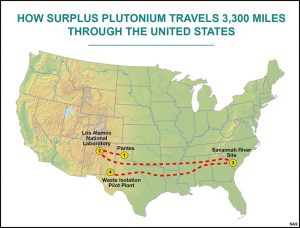
That’s a lot of time on the highway for radioactive material, especially considering conditions on Interstate 40. It seems an expensive and inefficient way of disposing of plutonium — a 3,300-mile trip, ending with the materials deep beneath the ground at WIPP.
That’s a site, by the way, that only was supposed to store low-level transuranic waste — the contaminated gloves, equipment, clothing, soil and other materials that need to be disposed of safely. The WIPP mission continues to be expanded, another reason the state must increase its oversight. We expect elected officials — whether the governor or members of New Mexico’s congressional delegation — to speak up further about possible plutonium pit disposal, too.
There are questions about whether the pits need to be removed from Pantex at all, or whether work to make them inoperable in weapons could take place where they currently are being held. That would mean improving storage facilities, but eliminate a lot of highway traffic. Barring keeping the pits in place, all waste roads lead to New Mexico, That why residents here have a huge stake in determining what happens to these pits.
Stay alert for notices of meetings and time for public comment. There’s no guarantee informed opposition will change plans by agencies intent on certain action, but speaking up beats staying quiet. Oh, and think about this: before rushing full speed ahead to produce even more plutonium pits, it’s time to at least try to find a way to dispose of the waste we’ve already created.
Maybe, just maybe, not all the waste has to be buried in New Mexico. Or driven across New Mexico highways. It’s a big country.
- Thank you to everyone who voted for Archbishop John Wester of Santa Fe as the 2022 Arms Control Association Person of the Year.
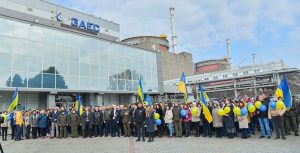 The Archbishop is the runner-up! The Energoatom staff at Ukraine’s Zaporizhzhia nuclear power plant (ZNPP) were selected as the 2022 Arms Control Persons of the Year through an online poll that drew more than 3,500 participants from nearly 80 countries. https://www.armscontrol.org/pressroom/2023-01/zaporizhzhia-staff-2022-acpoy
The Archbishop is the runner-up! The Energoatom staff at Ukraine’s Zaporizhzhia nuclear power plant (ZNPP) were selected as the 2022 Arms Control Persons of the Year through an online poll that drew more than 3,500 participants from nearly 80 countries. https://www.armscontrol.org/pressroom/2023-01/zaporizhzhia-staff-2022-acpoy
- Friday, January 20th from noon to 1 pm –
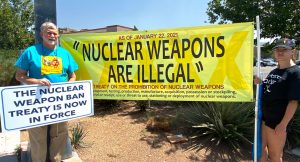 Join the weekly peaceful protest for nuclear disarmament on the corners of Alameda and Guadalupe in downtown Santa Fe with Veterans for Peace, CCNS, Nuclear Watch NM, Loretto Community, Pax Christi and others.
Join the weekly peaceful protest for nuclear disarmament on the corners of Alameda and Guadalupe in downtown Santa Fe with Veterans for Peace, CCNS, Nuclear Watch NM, Loretto Community, Pax Christi and others.
- Saturday, January 21st from 2 pm to 3:30 pm –
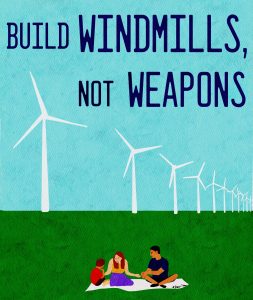 Build Windmills, Not Weapons free event at SOMOS (Society of the Muse of the Southwest), 108 Civic Plaza Drive, Taos, NM. Music, poetry and readings from the great Pacifists. For more information, call 575-758-0081.
Build Windmills, Not Weapons free event at SOMOS (Society of the Muse of the Southwest), 108 Civic Plaza Drive, Taos, NM. Music, poetry and readings from the great Pacifists. For more information, call 575-758-0081.
- Sunday, January 22nd –
 The Second Anniversary of the Treaty on the Prohibition of Nuclear Weapons. https://www.nuclearbantreaty.org/
The Second Anniversary of the Treaty on the Prohibition of Nuclear Weapons. https://www.nuclearbantreaty.org/
- Tuesday, January 24th, 2023 at 8 am Mountain Time –
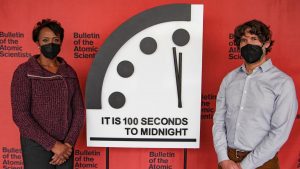 Bulletin of Atomic Scientists will make the 2023 Doomsday Clock announcement. https://thebulletin.org/doomsday-clock/
Bulletin of Atomic Scientists will make the 2023 Doomsday Clock announcement. https://thebulletin.org/doomsday-clock/
- Tuesday, January 24th, 2023 from 6 to 9 pm Mountain – Carlsbad, NM –
 in-person public hearing about the DOE/NNSA Surplus Plutonium Disposition Program at the Carousel House at Pecos River Village Conference Center, 711 Muscatel Avenue, Carlsbad, NM. First 30 minutes are a poster session, followed by a NNSA presentation and then public comment session. https://www.energy.gov/nepa/doeeis-0549-surplus-plutonium-disposition-program
in-person public hearing about the DOE/NNSA Surplus Plutonium Disposition Program at the Carousel House at Pecos River Village Conference Center, 711 Muscatel Avenue, Carlsbad, NM. First 30 minutes are a poster session, followed by a NNSA presentation and then public comment session. https://www.energy.gov/nepa/doeeis-0549-surplus-plutonium-disposition-program
- Thursday, January 26th, 2023 from 6 to 9 pm Mountain –
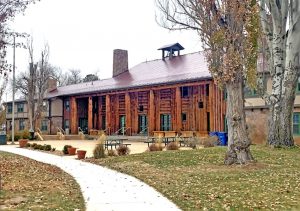 Los Alamos, NM – in-person public hearing about the DOE/NNSA Surplus Plutonium Disposition Program at *** New LOCATION *** at Fuller Lodge, 2132 Central Avenue, Los Alamos, NM. First 30 minutes are a poster session, followed by a NNSA presentation and then public comment session. https://www.energy.gov/nepa/doeeis-0549-surplus-plutonium-disposition-program
Los Alamos, NM – in-person public hearing about the DOE/NNSA Surplus Plutonium Disposition Program at *** New LOCATION *** at Fuller Lodge, 2132 Central Avenue, Los Alamos, NM. First 30 minutes are a poster session, followed by a NNSA presentation and then public comment session. https://www.energy.gov/nepa/doeeis-0549-surplus-plutonium-disposition-program
- Monday, January 30th, 2023 from 5 to 8 pm Mountain –
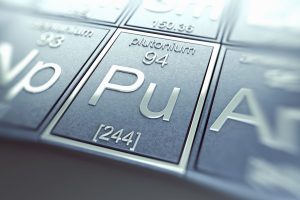 Online (ZoomGov) public hearing about the DOE/NNSA Surplus Plutonium Disposition Program. The meeting URL will be posted on the NNSA’s NEPA Reading Room – https://www.energy.gov/nnsa/nnsa-nepa-reading-room
Online (ZoomGov) public hearing about the DOE/NNSA Surplus Plutonium Disposition Program. The meeting URL will be posted on the NNSA’s NEPA Reading Room – https://www.energy.gov/nnsa/nnsa-nepa-reading-room
Tags: Carlsbad, Department of Energy, environmental impact statement, immobilization, LANL, Los Alamos, Los Alamos National Laboratory, Santa Fe New Mexican Our View, SPDP, Surplus Plutonium Disposition Project, Waste Isolation Pilot Plant, WIPP, “Getting rid of plutonium pits – so many questions, ” Disposing of plutonium: So many questions, ” “Buckle up. This is going to be a contentious discussion”


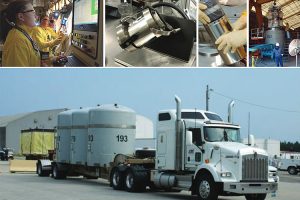

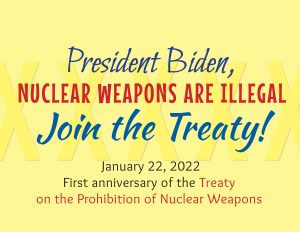
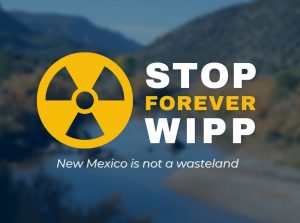






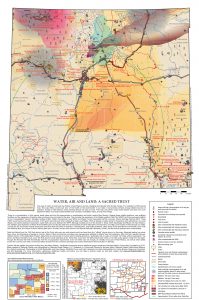

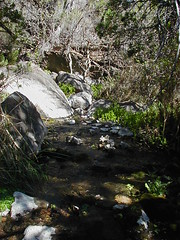

Comments
No comments so far.